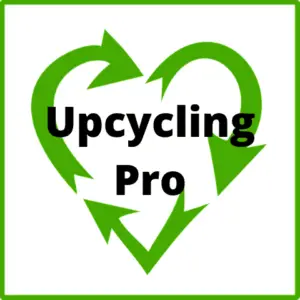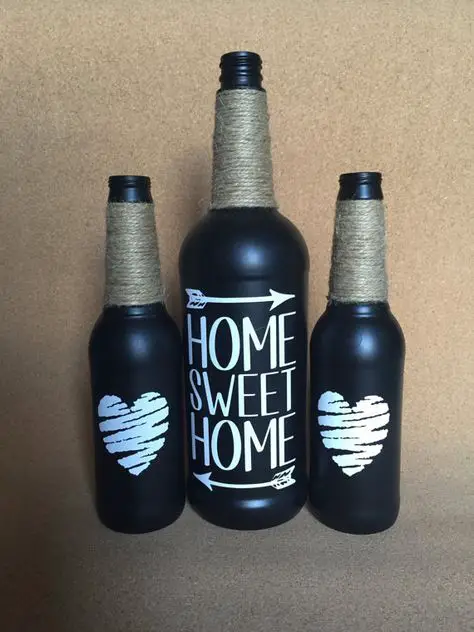Upcycling is an innovative and sustainable approach to waste reduction.
In recent years, upcycling has gained popularity as a creative and eco-friendly solution to the ever-increasing waste problem. From transforming old clothes into trendy fashion items to repurposing discarded materials into unique home décor, upcycling has become a creative outlet for environmentally-conscious individuals and businesses alike. But what is upcycling, and how does it differ from recycling?
At its core, upcycling involves taking waste materials or unwanted items and giving them a new life or purpose, often in a more valuable or useful form. Unlike recycling, which breaks down and transforms materials into new ones, upcycling aims to make the most out of existing resources without major processing or degrading their quality. It’s a way to keep materials out of landfills and reduce the environmental impact of manufacturing new products.
Upcycling is not a new concept, but it has gained traction in recent years, especially among the younger generation who are passionate about environmental sustainability and the circular economy. By reusing materials that would otherwise end up in the trash, upcycling helps to conserve resources and reduce greenhouse gas emissions, which are major contributors to climate change.
The benefits of upcycling go beyond environmental sustainability. Upcycled products often have a unique and one-of-a-kind character that sets them apart from mass-produced items. This gives them a higher value and appeals to consumers who are looking for something different and meaningful. Upcycling can also be a source of income for individuals and businesses that specialize in creating upcycled products.
There are many types of materials that can be upcycled, from textiles and furniture to glass and plastic. The possibilities are endless, and it all starts with a creative and innovative approach to reusing and repurposing existing resources.
What upcycling means – the definition of upcycling
Reuse discarded objects or material) in such a way as to create a product of higher quality or value than the original.
Taking something not used anymore and enhancing it to restore function, create a new function, and/or increase its value.
So as an example, we can take an old jam jar that we would otherwise throw out, glue some clay in the shape of flowers onto the side of the jar, paint them, and the jar gives you a nice stationery holder which to some could be worth $10, far more than the cost of the clay, paint or even a brand new jar.
When did upcycling start? Who invented it?
The term Upcycling was first coined by Reiner Pliz, a German engineer, in 1994. He noted that recycling resulted in producing products of lesser value and/or quality so a new term to describe taking a product and changing it to make it better or valuable was needed.
So breaking off the ‘re’ prefix from recycling, as we are not making like for like anymore and adding the prefix ‘up’ as we are making something better or of higher value to make the new term ‘upcycling’.
Why is upcycling so popular?
Upcycling has gained traction mainly at first with the extremely eco-focused. As time passed and we became more aware of recycling and the needs of our planet then more and more people became interested in upcycling as a means of recycling but without any major breaking down and remaking into new things.
The younger creative types find the prospect of upcycling a positive move to not only save the planet but as a means of generating income as well. Generally upcycling creates items of equal or greater value, which explains why it is increasingly popular.
It gives upcycled items a second life
When we upcycle, it not only saves the environment but it adds a higher value to something that could otherwise be considered worthless. Many of us have stacks of these household items just sitting around waiting to be turned into upcycled products.
Items such as glass jars and fabric remnants are popular materials for people with a passion for crafting to use as base materials.
Upcycling is such a simple idea it has been endorsed by the environmental protection agency as its creative reuse of what can be considered waste materials has helped reduce landfill expansion and has even been used to create a number of small businesses focused on turning unwanted products into highly sought after items.
Why upcycling is better than recycling?
Upcycling is better than recycling as the recycling process uses energy to make the process work, even though the energy needed is often much less than when making things from scratch it’s still required to some degree.
The products produced by way of recycling are often of lesser value and/or quality which means the process becomes uneconomical and unsustainable after a period.
Upcycling, on the other hand, is most often done by hand thus eliminating most if not all of the heavy industrial processes needed to recycle and in many cases reducing the need for raw materials.
Upcycling also creates products of value, which in some cases may be purchased or received in lieu of acquiring something new which needed to be manufactured using modern processes which contribute to factory emissions, energy consumption, and generated waste.
How upcycling helps the environment
Upcycling helps the environment by reducing the amount of waste that gets tossed out each and every day. It reduces the recycling burden by taking items out of the loop at the beginning of the process. It reduces the need to use heavy machinery and factories to process the materials into base forms to be remade into recycled products, which in turn lowers emissions and overall carbon footprints.
Upcycling, more importantly, educates and shows people that trash is not just trash but free materials that can be saved and used to make things of beauty. These things once made extend the life of the original item without the need for any major processing.
How the upcycling process helps others
As previously mentioned upcycling is the process of taking unwanted materials and reusing them to reduce waste and the Upcycled Food Association has done just that. What they have done is to take food waste, that is, in this case, surplus food that would have been thrown away, and turned it into upcycled food.
What is upcycled food, it is food made from excess ingredients that have been put together in a way that tasty dishes are produced with what was otherwise unwanted food.
Why upcycling is important?
Upcycling is important because many people see recycling as something mundane and unimportant, they don’t see the bigger picture. Once they see something upcycled they begin to appreciate the value of the crafting and effort used to save materials from ending up being ground down or even worse, dumped in landfills.
Once we fully embrace upcycling we will see a reduction in consumer demand for wasteful, damaging items and will see a return to demand for eco-friendly, sustainable purchases.
Why is upcycling sustainable?
Upcycling is sustainable as it saves the need to use fossil fuels to recreate new things. We take what has already been produced and make it better. Energy is used as well as other materials when upcycling but at an almost negligible rate when compared to regular recycling.
Upcycling reduces emissions, reduces the need to source new materials like metals, ores, and timber, meaning the land is left untouched rather than deforested and strip-mined, and reduces our need to source materials from abroad, also reducing transportation costs and emissions.
Is upcycling profitable?
Yes, very much so. Profit margins range from 100% for simple, small pieces of work to over 1,000% profit from more complex pieces. The beauty of upcycling is that it can be done anywhere, such as in your home or garden shed. So with just a few clever upcycling ideas, you can easily make and sell your upcycling projects.
There are many websites that sell and promote upcycled products, the most popular being Etsy. Sellers on Etsy with good products can easily make in excess of $80-100k a year.
Plastic upcycling
Upcycling plastic can be lucrative, especially if you are making household items like kitchen tidies, stationery holders, etc. If you have styrofoam then you can make a lot more crafting for the roleplayer/wargaming market where gaming terrain like mines, dungeons, and villages can sell for hundreds of dollars and do so regularly.
Aluminum can upcycling
If you use a lot of canned products then you may be in luck here. Instead of tossing those cans into a bag for recycling why not use them to make flower pots? Or maybe a kitchen tidy? How about a large industrial tower for a war game? Instead of getting pennies per pound for your cans, upcycle them and get a few dollars for each one!
Cardboard and Paper upcycling
Cardboard is so versatile it’s a wonder we toss any of it away at all. The humble cardboard box can become a child dollhouse, a funky Italian-style house that is a lamp, a desk tidy. A sheet of cardboard can become a flower wall hanging, a picture frame, a clock, and much more.
Paper is also vastly under recycled with the US only recycling about 10% of all recyclable paper, here is an article where you can use your paper to make money rather than toss it into a landfill somewhere,
Glass upcycling
Glass is no exception, with over 30 billion glass jars, bottles, and other containers being thrown out in the US alone, we are spoilt for choice when it comes to readily available materials.
Glass can be upcycled into lamps, drinking glasses, candle jars, micro gardens, wind chimes, bird feeders, and a lot more besides.
Upcycling is a way of taking something and making it better and/or more valuable but at the same time being a sustainable practice because of the positive net effect on our environment.
It’s a way to reduce our impact on the planet while becoming more thoughtful and aware of our effects and what we can do to mitigate these issues.
We can also use this opportunity to make money and spread the word, making upcycling a fun, eco-friendly, and profitable way to live.
Old wood upcycling
Old wood comes in many forms, usually just junk items like broken doors, wooden crates, old shutters, and wooden planks. This reclaimed wood can be cleaned, sanded, and made into new items like a cable drum table or a pallet bed. What upcycling means for these items is that upcycling furniture is also now possible and can be done in such a way that it uses minimal materials.


